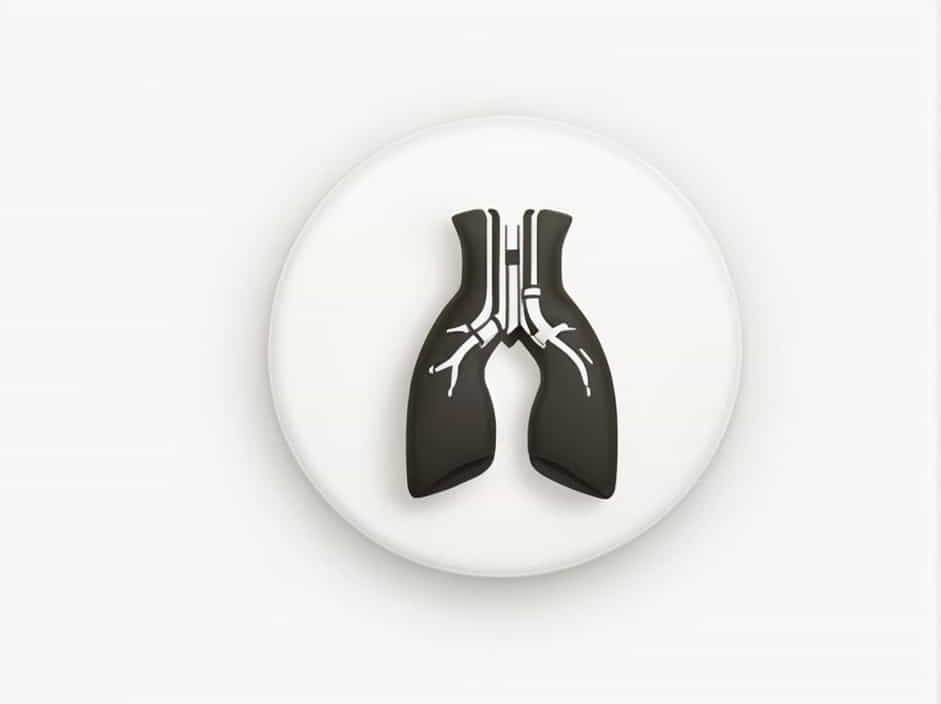The trachea (windpipe) and bronchi are essential parts of the respiratory system. They serve as airways that allow oxygen to reach the lungs and carbon dioxide to be expelled from the body. But have you ever wondered what keeps them open and prevents them from collapsing?
The trachea and bronchi remain open due to the presence of cartilage rings and structural support from smooth muscles and connective tissues. This ensures a continuous and unobstructed airflow to and from the lungs. Understanding this mechanism is crucial for knowing how the respiratory system functions and what happens when issues like airway collapse or obstruction occur.
Structure of the Trachea and Bronchi
1. What Is the Trachea?
- The trachea is a tube-like structure that connects the larynx (voice box) to the bronchi.
- It is approximately 10-12 cm long and 2-3 cm wide in adults.
- It is lined with mucous membranes and cilia that help trap dust and microbes.
2. What Are the Bronchi?
- The bronchi are two branches that extend from the trachea into the lungs.
- They further divide into smaller bronchioles, leading to the alveoli (air sacs where gas exchange occurs).
- Like the trachea, bronchi have cartilage and smooth muscle for support and flexibility.
What Keeps the Trachea and Bronchi Open?
1. Cartilage Rings: The Main Structural Support
- The trachea is reinforced by C-shaped cartilage rings made of hyaline cartilage.
- These rings prevent the trachea from collapsing while allowing some flexibility.
- The open part of the C-shaped rings faces the esophagus, allowing it to expand when swallowing food.
2. Cartilage Plates in the Bronchi
- Unlike the trachea, the bronchi do not have complete rings but instead have irregular cartilage plates.
- These plates provide support while allowing some movement and flexibility for breathing.
3. Smooth Muscle and Connective Tissue
- Smooth muscles in the walls of the trachea and bronchi help regulate airway size.
- When needed, these muscles can contract or relax, adjusting airflow to the lungs.
- Elastic connective tissue allows expansion and recoil during breathing.
4. Intra-Airway Pressure
- The pressure difference between the inside of the airway and the surrounding tissues helps keep the trachea and bronchi open.
- During inhalation, the negative pressure inside the chest prevents airway collapse.
5. Mucus and Cilia: Additional Support
- The lining of the trachea and bronchi produces mucus, which helps trap ptopics and prevent blockages.
- Cilia (tiny hair-like structures) move the mucus and debris toward the throat for removal.
Why Is Airway Support Important?
1. Preventing Airway Collapse
- If the trachea or bronchi collapse, airflow to the lungs is obstructed, leading to breathing difficulties or suffocation.
- Conditions like tracheomalacia (weak cartilage) can cause airway instability.
2. Efficient Oxygen Delivery
- A stable airway ensures that oxygen reaches the lungs and carbon dioxide is expelled efficiently.
- This is essential for maintaining normal body function and metabolism.
3. Protection Against External Pressure
- The rigid structure prevents compression from surrounding organs, such as the esophagus or blood vessels.
- This allows normal swallowing and circulation without interfering with breathing.
Common Disorders That Affect Airway Stability
1. Tracheomalacia
- A condition where the tracheal cartilage is weak, leading to airway collapse.
- It can cause wheezing, breathing difficulties, and recurrent respiratory infections.
2. Asthma and Bronchoconstriction
- Smooth muscle contraction in the bronchi can lead to narrowing of airways.
- This occurs in conditions like asthma, chronic bronchitis, and allergic reactions.
3. Chronic Obstructive Pulmonary Disease (COPD)
- Conditions like chronic bronchitis and emphysema lead to airway inflammation and loss of elasticity.
- This makes it harder to keep the airways open and can cause shortness of breath.
4. Airway Obstruction
- Foreign objects, tumors, or excessive mucus can partially or completely block the airways.
- This requires immediate medical attention to restore airflow.
How to Maintain Healthy Airways
1. Avoid Smoking and Pollutants
- Smoking weakens cartilage and damages airway lining.
- Air pollution and irritants can cause chronic inflammation and mucus buildup.
2. Practice Deep Breathing Exercises
- Exercises like diaphragmatic breathing help keep airways clear and improve lung function.
3. Stay Hydrated
- Drinking enough water helps keep mucus thin, preventing blockages in the airway.
4. Manage Respiratory Conditions
- If you have asthma or allergies, follow medical advice to keep your airways open and functioning properly.
5. Maintain Good Posture
- Proper posture ensures that the trachea and bronchi remain open and allows for better lung expansion.
The trachea and bronchi are essential for maintaining an open airway and ensuring proper airflow to the lungs. Their C-shaped cartilage rings, smooth muscle, connective tissues, and internal air pressure work together to prevent collapse and support efficient breathing.
Understanding how these structures function helps in recognizing and preventing respiratory conditions that may affect airway stability. By adopting healthy habits, avoiding harmful substances, and managing respiratory conditions, we can maintain optimal airway health and improve overall breathing efficiency.
